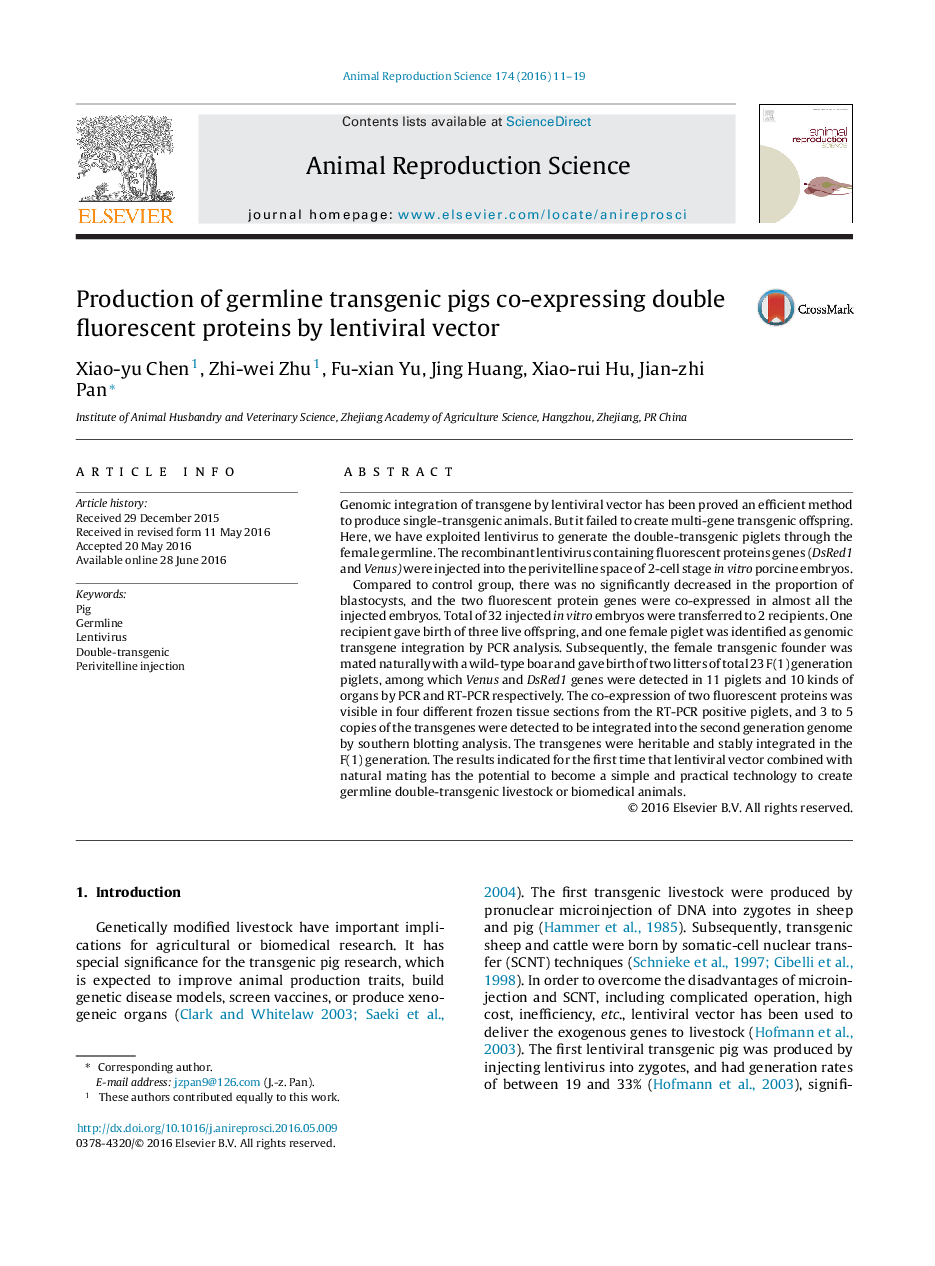| Article ID | Journal | Published Year | Pages | File Type |
|---|---|---|---|---|
| 5520356 | Animal Reproduction Science | 2016 | 9 Pages |
Genomic integration of transgene by lentiviral vector has been proved an efficient method to produce single-transgenic animals. But it failed to create multi-gene transgenic offspring. Here, we have exploited lentivirus to generate the double-transgenic piglets through the female germline. The recombinant lentivirus containing fluorescent proteins genes (DsRed1 and Venus) were injected into the perivitelline space of 2-cell stage in vitro porcine embryos.Compared to control group, there was no significantly decreased in the proportion of blastocysts, and the two fluorescent protein genes were co-expressed in almost all the injected embryos. Total of 32 injected in vitro embryos were transferred to 2 recipients. One recipient gave birth of three live offspring, and one female piglet was identified as genomic transgene integration by PCR analysis. Subsequently, the female transgenic founder was mated naturally with a wild-type boar and gave birth of two litters of total 23 F(1) generation piglets, among which Venus and DsRed1 genes were detected in 11 piglets and 10 kinds of organs by PCR and RT-PCR respectively. The co-expression of two fluorescent proteins was visible in four different frozen tissue sections from the RT-PCR positive piglets, and 3 to 5 copies of the transgenes were detected to be integrated into the second generation genome by southern blotting analysis. The transgenes were heritable and stably integrated in the F(1) generation. The results indicated for the first time that lentiviral vector combined with natural mating has the potential to become a simple and practical technology to create germline double-transgenic livestock or biomedical animals.
